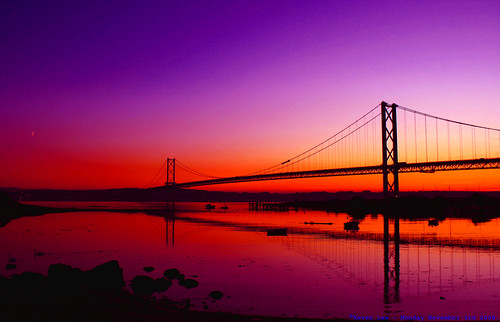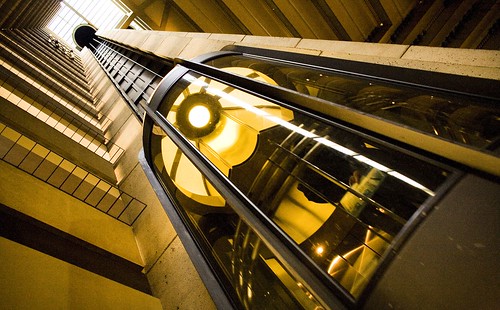What if the cable snaps?
It’s as common a question as how does cable handle winter?
I can somewhat understand the concern about a snapping cable. After all, not only would it endanger those online, it could be devastating to the people on the ground.
And yet, it’s a concern that history judges to be somewhat invalid. The cables used in aerial ropeways almost never snap. It is such a rare and uncommon occurrence, it’s barely worth noting. That doesn’t mean they’re invincible, it means that proper care, maintenance and replacement scheduling will eliminate virtually all such concerns.
Nevertheless (and just to reassure everyone) here are six fairly common everyday uses for industrial-strength cables. They’re uses we think nothing of and all are perfectly safe:
So why again, should we be so concerned about gondolas? (Okay, maybe tightrope walking between the World Trade Center Towers isn’t exactly safe, but that has nothing to do with the tightrope itself. Incidentally: If you haven’t seen the documentary Man on Wire, where that photo comes from, you absolutely must.)







9 Comments
I found this blog researching cable systems to apply to long distance cargo transport in areas of no infrastruture.
I had questions about steel cables among other things and hope you will produce a lesson module on cables, as well as open the Cable Forums.
Are the cables standard or is the diameter variable between each project?
Is the cable the cost driver of operating the system? You talk of 3 cable systems being more expensive then 2 more cables, is the cable the major reason for the cost.
How is cable transported to remote locations; helicopters can carry such weight?
Is it always one long cable or are segments attached to each other in construction?
Why wouldn’t you use Dyneema or vectran fiber cables? Their snap strength can be higher then steel and shouldn’t the lighter weight mean cheaper infrastructure and longer distances between towers?
How different are ropeway conveyors to gondola systems, and does any innovations blend between the two?
Seth,
To expand on what LX said:
Cable is relatively standardized and cheap now – at least compared to the rest of the systems. The reason a 3S system is more expensive is – as LX said – due to increased components and more engineering. It also requires sturdier towers and stations to accommodate the extra weight of all the additional cables.
The industry works with both ropeway conveyors and gondola systems. The two technologies are not, fundamentally, different.
Most steel cable used in cable transit installations actually has a plastic core which reduces weight and – counter-intuitively – increases strength. Don’t ask me how this is the case, as I don’t know :).
Hello Seth,
check out those pictures: http://www.bergbahn.de/seilbahnen/bergbahn-561
and a script about cable car systems: http://www.doppelmayr.com/upload/prj1/pdf/skript_seilbahntechnik_fml.pdf
1. Are the cables standard or is the diameter variable between each project?
A1. In a way I would say they are standard. I will answer your question using the 3S System. Due to capacity of load 3S is by far the savest and strongest because it uses 3 cables. 2 made of steel completely for doing the carriage work and one cable with an inlay of something else than steel but on the surrounding using still steel fibres. (check in the script chapter 7 page 12 -> 7-12 and following. The diameter is variable mainly between the different types of cable car systems.
2. Is the cable the cost driver of operating the system? You talk of 3 cable systems being more expensive then 2 more cables, is the cable the major reason for the cost.
A2. I wouldn’t say so. Cost drivers are depending on the system which is chosen. 3S for instance has more technology in it than a common MDG gondola. It also needs more material. It also depends where your site is located. If there is already existing infrastructure under the line it is more complicated than doing it on an empty mountain or field – therefore more expensive.
3. How is cable transported to remote locations; helicopters can carry such weight?
A3. See a roll of cable as a cargo container and there you go. I saw cable being transported on trains. On role on one waggon. So I believe one roll almost equals the weight of a container (and definately not in size).
Basically the cable is transportet like containers are, too. Ship, truck and train. In case of helicopters: you would need a really big one. (helicopters are used to build the connection between the stations by spanning a small rope. The small rope gets step-by-step replaced by bigger cables until the final rope diameter is reached.
4. Is it always one long cable or are segments attached to each other in construction?
Depends on the system. Using a 3S cable car system for instance it is 2 pieces of tracking ropes on each side. That makes 4 big cables (I think their diameter is around 5.6 cm each) and the pull rope (diameter around 4.5 cm) which ends are connected with each other (splicing) to build a circle. All together 5 cables.
5. Why wouldn’t you use Dyneema or vectran fiber cables? Their snap strength can be higher then steel and shouldn’t the lighter weight mean cheaper infrastructure and longer distances between towers?
I think that material is used for the inlay of the pull rope. Using steel has some preferences which are necessary. As you can see in the script on 7-13 a cable is made by many steel fibres – same as in elevators or bridges. Once it is spanned there won’t be that much of elasticity. And you can splice steel of course. Right now the maximum distance between stations is around 6 km. I hardly believe any longer distances for one closed system are necessary.
6. How different are ropeway conveyors to gondola systems, and does any innovations blend between the two?
A6. Based on my foreign language deficiencies I couldn’t understand your question. Maybe someone else can help here out.
And of course correct me on my answers.
Helicopter are used to build mast in a Alpine environment. Russian Kamov helicopter with counter rotating Rotors are used as they can navigate very precise while hauling a heavy load. Several mast out of prefabricated elements can be built in a day. I once coincidently was at a site where they set all mast of a chairlift within an afternoon. The material for the foundation and the foundation itself needs to be prepared first. But this needs not that big loads so a conventional helicopter can deliver the material.
Cable pull is done by pulling a small cable first which pulls a bigger one. Usually it needs several iterations of the process.
Just based on introspection, I suspect it is imagining a lot of lateral movement/flexing (in normal operations or during windy conditions or so on) which is making people concerned about snapping. With the exception of the high wire act–which I suspect triggers some of the same concerns in most people, well-grounded or not–I’m guessing most people conceive of these other applications as experiencing very little lateral movement (again, well-grounded or not).
Thanks for the replies everyone. Hope to see a section on the cheapest tower designs and construction in the future.
Hope the forums come online soon.
Relating to the transport of the cable the weight of the cable depends on the diameter, length and material.
There are many manufacturers of cables in the world and most are able to produce several diameters any custom length.
Relating to your question about joining cables It is very difficult/expensive to splice cables together. Every hall line must contain a splice at some point to form a loop. However adding additional splices to ease transport is generally a bad idea.
So cables will vary in weigh and spool size depending on the application.
I strongly disagree with LX above where recommends viewing a cable spool as a shipping container. Containers have weight limits, im not sure of the exact weight but i think its around 30 tonnes. Many cables exceed this making shipping a logistical challenge.
For example one of the cables for the Nong Ping 360 weighed in at over 120 tonnes. This pretty much means air transport is out of the question. Normally one end of the system has road, rail or barge access, a series of mouse lines can then be used to hang the main cable.
I saw a photo where two trucks were being used to transport a single cable. Each truck had a different end of the cable on a spool and the middle draped off the back of one truck over the cab of the second. the truck drove about 3-4m apart so the cable didn’t drag on the ground.
I have no idea about the synthetic fibers sorry. Maybe cost is an issue. The two you mention are also very slippery I think, this could also be a problem. I would like to know the answer to this question too.
I just ran over a page of a company producing those cables (with lots of small pictures and some information about the ropes and diameters): http://www.fatzer.com/contento/English/tabid/91/Default.aspx?language=en-US
@ScottB: right. the most important factor is the weight and in fact it is more than 30 t usually (i.e. 50 t in Koblenz for the tracking rope at around 1000m length = ~30kg/m). so when it comes down to the transportation, the crucial factor is the situations given. whether it’s the sizes or material of roads (tunnels, bridges and so on), the vehicles being used for transportation or sometimes even only the weather conditions.
@Seth: it hasn’t been mentioned here in the thread but in several others: google for “funitel bratislava”. it is basically a system from the alpine areas modified for the needs of the volkswagen factory.